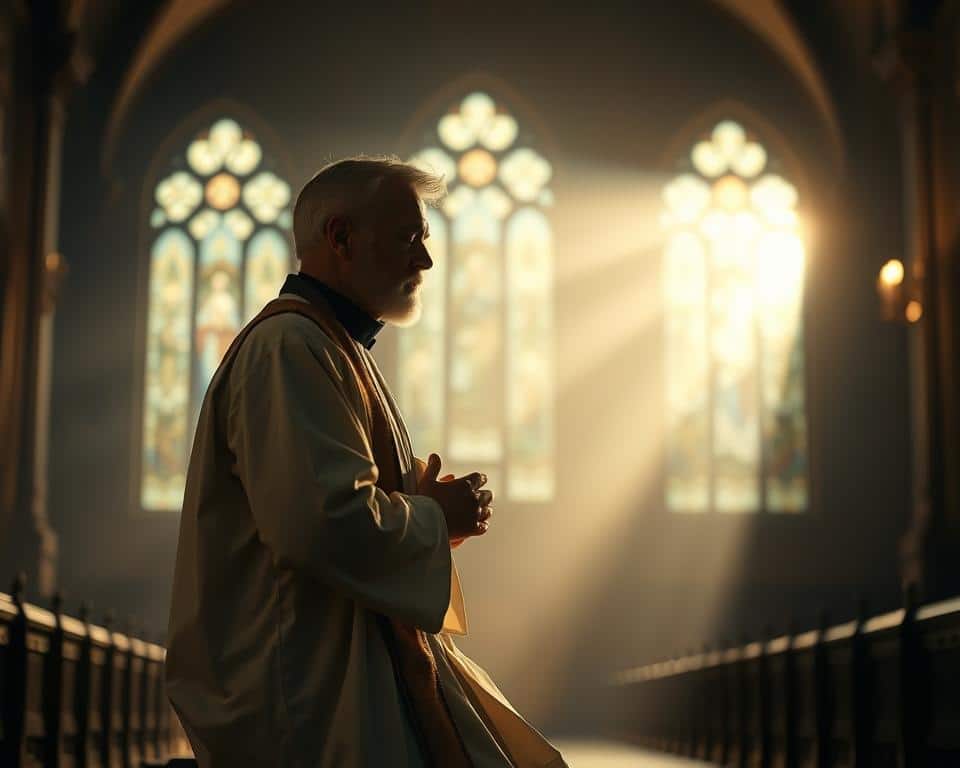The resurrection stands as the cornerstone of Christian faith. It’s not just a historical event but a truth that shapes our hope and future. Understanding the facts behind it can strengthen your faith and provide clarity in your walk with God.
Three key historical points support this event: the crucifixion, the empty tomb, and the post-resurrection appearances. These facts are not just stories but well-documented truths that have been examined for centuries.
For Seventh-day Adventists, the resurrection is more than a past event. It’s a promise of what’s to come—our hope in Christ’s return. Daniel Ang’s journey of aligning scientific inquiry with faith shows how these truths can transform lives.
As you explore this topic, let it deepen your understanding and inspire your faith. The resurrection is not just history; it’s a living hope for today and tomorrow.
Introduction to the Evidence for Jesus’ Resurrection
The resurrection story is deeply rooted in historical and cultural contexts. To fully grasp its significance, we must explore the world in which it occurred. The first century was a time of tension, expectation, and unique practices that shaped this event.
Roman crucifixion methods were brutal and designed to deter rebellion. Yet, Jewish burial customs emphasized respect for the deceased. These practices provide a backdrop for understanding the events surrounding the resurrection.

In the first century, many Jews awaited a Messiah who would deliver them from oppression. The idea of resurrection, however, was not part of their expectations. This makes the resurrection claims even more remarkable, as they defied contemporary Jewish theology.
Archaeological findings, such as Jerusalem tomb structures, offer tangible insights into burial practices of the time. These discoveries align with the historical evidence found in ancient texts, providing a clearer picture of the resurrection narrative.
Understanding these details helps us see the resurrection not just as a story, but as a transformative event rooted in history. It’s a reminder of God’s power and the hope we have in His promises.
The Crucifixion of Jesus
The crucifixion is one of the most widely attested events in ancient history. Historical records and scholarly research overwhelmingly confirm its occurrence. This event is not just a cornerstone of faith but also a well-documented historical fact.

Gerd Lüdemann, a prominent scholar, has affirmed the crucifixion as a historical reality. His work aligns with the majority scholars who agree on this event. Nearly 99% of historians acknowledge the crucifixion as a factual occurrence.
Historical Accounts of the Crucifixion
Ancient texts, including the Gospels, provide detailed accounts of the crucifixion. Mark 15:40 mentions witnesses to the execution, adding credibility to the narrative. The brutality of Roman crucifixion methods is also well-documented.
Blood loss and trauma from the crucifixion process are supported by medical evidence. These details highlight the physical suffering endured, further validating the historical accounts.
Scholarly Consensus on Jesus’ Death
The claim Jesus died on the cross is supported by extensive research. The “swoon theory,” suggesting Jesus survived, has been widely refuted. Scholars point to the lack of evidence supporting this alternative explanation.
Seventh-day Adventist teachings emphasize the crucifixion as central to the atonement. This event is seen as a fulfillment of Scripture and a demonstration of God’s love. It’s a reminder of the hope we have in Christ’s sacrifice.
- 99% of historians agree on the crucifixion.
- Blood loss and trauma evidence supports the narrative.
- Witnesses mentioned in Mark 15:40 add credibility.
- The “swoon theory” has been thoroughly refuted.
- Seventh-day Adventist commentary highlights the atonement’s significance.
The Burial of Jesus
The burial of Jesus is a pivotal moment in the narrative of faith. It connects the crucifixion to the empty tomb, forming a bridge in the story of hope. Understanding how Jesus was buried helps us see the historical and cultural context of the first century.
Joseph of Arimathea’s Role
Joseph of Arimathea, a respected member of the Jewish council, played a key role in the burial. He requested the body Jesus from Pilate, ensuring a proper burial. This act was unusual, as crucified criminals were often left in common burial pits.
Joseph’s actions align with Jewish customs of the time. He provided a tomb carved out of rock, reflecting the practices of wealthy individuals. This detail is significant, as it shows the care taken to honor Jesus even in death.
Archaeological Evidence of Burial Practices
Archaeological discoveries, like the 1968 Giv’at ha-Mivtar crucifixion victim, provide insights into burial customs. These findings confirm the use of ossuaries and rock-cut tombs in the first century.
Key aspects of burial practices include:
- Jewish ossuaries for secondary burials.
- Roman exceptions allowing certain burials.
- Use of limestone for tomb construction in Jerusalem.
- Contrast with common criminal burial pits.
These details help us understand the historical accuracy of the burial narrative. They also highlight the care taken to preserve the truth of Scripture.
The Empty Tomb
The empty tomb remains one of the most compelling aspects of the resurrection narrative. It’s a moment that bridges the crucifixion and the appearances, offering a tangible sign of hope. For early believers, this discovery was life-changing.
When the tomb was found empty, it sparked both faith and questions. This event is central to the story, and its historical significance continues to be examined. Let’s explore the details that make it so remarkable.
Women as First Witnesses
In a patriarchal society, the role of women as the first witnesses is striking. Their testimony carries weight because it defies cultural norms. This detail adds credibility to the narrative, as women were unlikely to be fabricated as primary sources.
The Gospels highlight their encounter with the empty tomb. Their courage and faithfulness set the stage for the resurrection story. It’s a reminder that God often works through unexpected means.
Scholarly Debate on the Empty Tomb
The empty tomb has been a subject of intense scholarly debate. Gary Habermas notes that 75% of scholars accept its historicity. This majority scholars consensus underscores its importance in historical research.
Bart Ehrman, representing a minority position, questions the tomb’s significance. However, his arguments often lack supporting evidence. The location of Jerusalem preaching and the early creed in 1 Corinthians 15:3-7 further validate the empty tomb’s credibility.
Alternative theories, like the wrong tomb or body theft, have been widely refuted. These explanations fail to account for the transformative impact of the resurrection. For Seventh-day Adventists, the empty tomb is a promise of Christ’s return and our future hope.
Post-Resurrection Appearances
After the crucifixion, the appearances of Jesus transformed lives. These encounters are not just stories; they are foundational to Christian faith. They provide a glimpse into the power of God’s word and the hope it brings.
Appearances to the Disciples
Jesus appeared to His disciples multiple times after His death. These moments were filled with reassurance and purpose. He showed them His wounds, ate with them, and commissioned them to spread the Gospel.
These appearances were not just physical but deeply spiritual. They strengthened the disciples’ faith and prepared them for their mission. It’s a reminder that God meets us where we are, even in our doubts.
Paul’s Encounter with the Risen Jesus
One of the most dramatic appearances was to Paul on the Damascus road. This event marked a turning point in his life. Paul, once a persecutor of Christians, became one of the most passionate apostles.
Acts 9:3-7 describes this encounter vividly. Paul’s conversion is a testament to the transformative power of encountering the risen Christ. His life changed from hostility to unwavering devotion.
Paul’s writings in 2 Corinthians 11:24-25 reveal the persecution he endured for his faith. Yet, his encounter with the son god gave him the strength to persevere. This story inspires us to trust in God’s plan, even when it seems unexpected.
“I am Jesus, whom you are persecuting.” – Acts 9:5
Key takeaways from these appearances include:
- The disciples’ fear turned into boldness.
- Paul’s transformation from persecutor to apostle.
- The immediate impact of these encounters on early Christianity.
- Seventh-day Adventist teachings highlight the significance of these events.
These appearances remind us that God’s truth is alive and active. They encourage us to live with faith and purpose, knowing that Christ’s resurrection is our hope.
The Transformation of the Disciples
The disciples’ transformation is a powerful testament to the truth of God’s word. After the crucifixion, they were filled with fear and uncertainty. Yet, something extraordinary happened that changed their lives forever.
Their journey from fear to boldness is a remarkable story of faith. It’s a reminder that God’s truth can transform even the most broken hearts. Let’s explore how their lives were forever changed.
From Fear to Boldness
Before the resurrection, the disciples were hiding in fear. They were afraid of the authorities and unsure of their future. But after encountering the risen Christ, everything changed.
They went from hiding to boldly proclaiming the Gospel. Their courage was rooted in the truth they had witnessed. This shift is a powerful example of how faith can overcome fear.
Martyrdom of the Apostles
The apostles’ unwavering commitment to their faith led many to martyrdom. Sean McDowell’s research highlights their fate, showing how they stood firm in their belief.
Peter’s crucifixion tradition and James’ execution in Acts 12:2 are well-documented. These events reflect the cost of their faith and the truth they proclaimed.
Roman execution methods for Christians were brutal, yet the apostles remained steadfast. Their courage parallels the Seventh-day Adventist call to be end-time witnesses, standing firm in God’s truth.
- Peter’s crucifixion tradition underscores his commitment.
- James’ execution in Acts 12:2 highlights early Christian persecution.
- Roman methods were designed to intimidate, but faith prevailed.
- Seventh-day Adventist teachings emphasize similar courage in end times.
- Modern false martyr claims contrast with the apostles’ genuine sacrifice.
Their lives remind us that faith in the claim Jesus is worth every sacrifice. The resurrection gave them hope, and it continues to inspire us today.
The Conversion of Paul
Paul’s journey from persecutor to apostle is one of the most dramatic transformations in Scripture. His story is a powerful reminder of God’s ability to change hearts and lives. It’s a narrative that continues to inspire faith and hope today.
Paul’s Hostility to Christianity
Before his encounter on the Damascus road, Paul was a fierce opponent of Christianity. He actively persecuted believers, even approving the stoning of Stephen. His zeal for Jewish law blinded him to the truth of God’s word.
Paul’s hostility was rooted in his conviction that Christianity was a threat to Judaism. He saw it as a heresy that needed to be eradicated. Yet, God had other plans for him.
His Dramatic Change of Heart
Everything changed when Paul encountered the risen Christ. Acts 9:3-7 describes the moment vividly. A blinding light, a voice from heaven, and a question that shook him to his core: “Why are you persecuting Me?”
This encounter was the beginning of Paul’s transformation. He was immediately baptized and spent three years in Arabia preparing for his ministry. His autobiographical account in Galatians 1:13-24 reflects the depth of this change.
Paul’s conversion is a plausible explanation for the rapid spread of early Christianity. His life became a living testimony to the power of God’s word. As he wrote in 2 Corinthians 5:16-17, “If anyone is in Christ, he is a new creation.”
Key aspects of Paul’s transformation include:
- Immediate baptism after his encounter.
- A three-year period of preparation in Arabia.
- His detailed account in Galatians 1:13-24.
- Seventh-day Adventist testimonies of similar conversions.
- Neurological theories that explore mystical experiences.
Paul’s story reminds us that no one is beyond God’s reach. His dramatic change of heart is a testament to the truth of God’s word and the hope it brings. It’s a story that continues to inspire faith and transformation today.
Early Christian Preaching in Jerusalem
The early church’s growth in Jerusalem is a testament to the power of faith. In the heart of the Jewish world, believers boldly proclaimed the message of hope. This movement faced opposition but continued to thrive, leaving a lasting impact.
Jerusalem was the starting point for the spread of Christianity. The disciples, empowered by their encounters with the risen Christ, preached with conviction. Their message centered on the truth of God’s word and the hope it brings.
Rapid Growth of the Early Church
The early church grew rapidly despite challenges. Acts 2:41 records that 3,000 people were added to their number in a single day. This growth was fueled by the disciples’ unwavering faith and the transformative power of their message.
Key factors contributing to this growth include:
- The disciples’ boldness in sharing their experiences.
- The fulfillment of Old Testament prophecies in Christ.
- The community’s commitment to caring for one another.
- Seventh-day Adventist teachings on the investigative judgment parallels.
Lack of Counter-Evidence
One striking aspect of early Christian preaching is the lack of counter-evidence. Jewish leaders, who opposed the movement, never produced the jesus body to refute the claims of the empty tomb. Their silence speaks volumes about the credibility of the resurrection narrative.
Justin Martyr’s dialogue with Trypho highlights this absence of counter-arguments. Medieval texts like Toledot Yeshu attempted to provide alternative explanations, but these lack historical support. Roman administrative records also fail to contradict the early Christian accounts.
Ancient graffiti and archaeological findings further validate the early church’s claims. These discoveries align with the truth of Scripture, reinforcing the hope we have in God’s word.
Historical Credibility of the Gospels
Understanding the historical reliability of the Gospels strengthens our faith in God’s word. These texts are not just ancient writings; they are a testament to the truth of Scripture. Scholars have spent years examining their accuracy, and their findings are compelling.
The Gospels provide multiple accounts of key events, each contributing to a fuller picture of Christ’s life. Richard Bauckham’s research on eyewitness testimony highlights how these narratives were preserved with care. This multi-layered approach adds depth to our understanding.
Multiple Attestation of Key Events
One of the strongest arguments for the Gospels’ credibility is the multiple attestation of key events. For example, the story of the woman caught in adultery (Pericope Adulterae) has been scrutinized through textual criticism. While debated, its inclusion in John’s Gospel reflects early Christian tradition.
Geographical details in Mark and John also align with historical findings. These accuracies suggest the writers had firsthand knowledge of the places they described. Such precision reinforces the trustworthiness of the Gospels.
Consistency Across Different Accounts
Despite being written by different authors, the Gospels show remarkable consistency. Memory transmission studies reveal how ancient oral traditions preserved core truths. This consistency is a hallmark of their reliability.
Seventh-day Adventist fundamental beliefs emphasize the importance of Scripture as God’s word. The Gospels’ historical credibility aligns with this conviction, offering a solid foundation for faith. Their enduring impact continues to inspire hope and truth.
- Pericope Adulterae textual criticism highlights early Christian traditions.
- John and Mark’s geographical accuracy supports their credibility.
- Memory transmission studies explain the preservation of Gospel truths.
- Ancient oral tradition mechanisms ensured consistency across accounts.
- Seventh-day Adventist teachings affirm the reliability of Scripture.
Jewish and Roman Sources
Historical records from Jewish and Roman sources provide valuable insights into the events surrounding Jesus’ death. These writings, though not Christian, offer a unique perspective on the crucifixion and its historical context. They help us understand how the world viewed these events at the time.
Non-Christian References to Jesus
Jewish historian Josephus mentions Jesus in his works, describing Him as a wise teacher who performed remarkable deeds. This reference, though debated, aligns with the Gospel accounts. Similarly, Roman historian Tacitus refers to Christ’s execution under Pontius Pilate, confirming the crucifixion as a historical event.
Pliny the Younger, a Roman governor, wrote about early Christians and their devotion to Christ. His letters provide a glimpse into how Roman authorities viewed the growing Christian movement. These non-Christian sources add credibility to the narrative of Jesus’ life and death.
Roman Records of Crucifixion Practices
Roman records detail the brutal methods used in crucifixion. Seneca, a Roman philosopher, described the process as a prolonged and agonizing death. His writings align with the Gospel accounts of Jesus’ suffering on the cross.
Archaeological findings, such as the remains of a crucifixion victim with a nail still embedded in the heel, provide tangible evidence of Roman practices. Roman military manuals also outline the procedures for carrying out executions, further validating the historical accuracy of the crucifixion narrative.
Key aspects of Roman crucifixion include:
- Use of nails to secure victims to the cross.
- Public display to deter rebellion.
- Physiological studies confirming the cause of death.
- Seventh-day Adventist health teachings on the physical impact of crucifixion.
These records remind us of the historical reality of Jesus’ death. They also highlight the depth of His sacrifice, offering hope and truth to all who believe.
The Role of Women in the Resurrection Narrative
The role of women in the resurrection narrative is both surprising and significant. In a patriarchal society, their testimony carries weight and challenges cultural norms. Their accounts provide a unique perspective on the events surrounding the empty tomb.
Women’s Testimony in a Patriarchal Society
In the first century, women were not considered reliable witnesses in legal or religious matters. Yet, the Gospels highlight them as the first to discover the tomb found empty. This detail is striking because it defies societal expectations.
Richard Bauckham’s research in Gospel Women emphasizes the credibility of their accounts. Women like Mary Magdalene and Joanna are named specifically, adding authenticity to the narrative. Their courage and faithfulness set the stage for the resurrection story.
Why Women’s Accounts Are Credible
The inclusion of women’s testimony meets the “embarrassment criterion.” If the story were fabricated, it’s unlikely that women would be chosen as primary witnesses. Their presence in the narrative underscores its historical accuracy.
Memory consistency studies also support the reliability of their accounts. Early church leadership roles for women, as seen in Seventh-day Adventist pioneers, further validate their significance. Their contributions remind us that God often works through unexpected means.
- Named vs. anonymous sources add authenticity.
- Embarrassment criterion highlights the narrative’s credibility.
- Seventh-day Adventist women pioneers reflect early church leadership.
- Memory consistency studies support the reliability of their accounts.
- Early church leadership roles for women challenge societal norms.
Women’s role in the resurrection narrative is a testament to God’s truth. Their testimony, rooted in faith and courage, continues to inspire hope today.
Theological Significance of the Resurrection
The resurrection holds profound theological meaning for believers. It’s not just an event in history but a cornerstone of divine truth. This moment reveals God’s power and love, offering hope that transforms lives.
In 1 Peter 1:3, we read about the “living hope” brought by the resurrection. This hope is not temporary but eternal, rooted in the promise of new life. It’s a reminder that God’s word is trustworthy and His promises are sure.
Resurrection as Proof of Jesus’ Divinity
The resurrection is a clear sign of Jesus’ divinity. It confirms His authority over death and His identity as the Son of God. This event fulfills Scripture and validates His mission to bring salvation to humanity.
Romans 6:4 connects the resurrection to baptism, symbolizing our new life in Christ. Just as Jesus rose, we too are raised to walk in newness of life. This truth is central to Seventh-day Adventist teachings on the sanctuary doctrine, emphasizing Christ’s ongoing ministry.
Implications for Christian Faith
The resurrection shapes every aspect of Christian faith. It’s a source of strength in times of trial and a reminder of God’s faithfulness. Here are some key implications:
- Baptism symbolism: Represents our death to sin and new life in Christ (Romans 6:4).
- Communion liturgy: Celebrates Christ’s sacrifice and resurrection, uniting believers in hope.
- Pastoral care: Offers comfort and assurance to those facing loss or hardship.
- Eschatological hope: Points to the future resurrection and Christ’s return.
These truths remind us that the resurrection is not just a past event but a living reality. It’s a foundation for our faith and a promise of what’s to come.
Alternative Theories to the Resurrection
Exploring alternative theories helps us understand the depth of faith in God’s word. While the resurrection is central to Christian belief, various explanations have been proposed over the years. Let’s examine two of the most discussed theories: the stolen body hypothesis and the hallucination theory.
The Stolen Body Hypothesis
One theory suggests that the body was stolen to create the illusion of resurrection. This idea often points to the disciples as the culprits. However, this explanation faces significant challenges.
First, the disciples were initially fearful and disheartened after the crucifixion. It’s unlikely they would risk their lives to steal the body. Second, Jewish and Roman authorities had every reason to produce the body to disprove the resurrection claims. Their silence speaks volumes.
Seventh-day Adventist teachings emphasize the importance of truth in Scripture. The stolen body theory fails to account for the transformative impact of the resurrection on the disciples’ lives.
The Hallucination Theory
Another theory proposes that the appearances were hallucinations. O’Connell’s study on collective hallucination offers insights into this idea. However, this explanation also has weaknesses.
Mass psychogenic illness criteria suggest that hallucinations are unlikely to occur simultaneously to multiple people in different locations. Paul’s conversion, for example, happened years later and in a different context. This timing makes the hallucination theory a less plausible explanation.
Cross-cultural vision comparisons and neuroscience studies on bereavement visions further challenge this theory. The consistency and impact of the appearances point to something more profound than mere hallucinations.
Key points to consider:
- Mass psychogenic illness criteria question the hallucination theory.
- Paul’s conversion timing doesn’t align with collective hallucination patterns.
- Seventh-day Adventist spiritual discernment highlights the truth of Scripture.
- Cross-cultural vision comparisons reveal differences from resurrection accounts.
- Neuroscience of bereavement visions provides insights into individual experiences.
These alternative theories remind us to approach Scripture with faith and discernment. The resurrection narrative stands as a testament to God’s power and the hope we have in His promises.
Scholarly Consensus on the Resurrection
Scholars have long debated the historical validity of the resurrection, yet a strong consensus has emerged. Many historians and theologians agree that the resurrection is a well-documented event. This agreement spans across different disciplines, offering a robust foundation for faith.
N.T. Wright’s scholarship on the resurrection has been particularly influential. His work highlights the historical and theological significance of this event. Wright’s research emphasizes how the resurrection aligns with good historical practices and ancient Jewish beliefs.
Majority View Among Historians
Gary Habermas’ research methodology has played a key role in shaping the majority view. His studies show that a significant number of historians accept the resurrection as a historical fact. This consensus is not limited to Christian scholars but includes Jewish and secular voices as well.
Jewish scholar Pinchas Lapide, for example, acknowledged the resurrection as a historical event. His perspective adds weight to the scholarly agreement. Interdisciplinary academic dialogue further strengthens this consensus, bridging theology, history, and archaeology.
Key Scholars Supporting the Resurrection
William Lane Craig is another prominent figure in this field. His work focuses on the philosophical and historical arguments for the resurrection. Craig’s contributions have helped many, including atheists like Lee Strobel, to reconsider their views.
Seventh-day Adventist theologians also affirm the resurrection’s historicity. They see it as a fulfillment of Scripture and a promise of Christ’s return. This perspective aligns with the broader scholarly consensus, offering hope and truth to believers.
- Gary Habermas’ research methodology highlights historical accuracy.
- N.T. Wright’s scholarship connects the resurrection to Jewish beliefs.
- Pinchas Lapide’s acknowledgment adds credibility to the narrative.
- William Lane Craig’s work bridges philosophy and history.
- Seventh-day Adventist teachings emphasize the resurrection’s significance.
The scholarly consensus on the resurrection is a testament to its historical and theological importance. It’s a reminder that faith is rooted in truth, offering hope for today and the future.
Why the Resurrection Is a Plausible Explanation
Why does the resurrection stand out as the most plausible explanation? It’s not just a matter of faith but also a conclusion supported by historical and logical analysis. When you examine the events surrounding Jesus’ death, the resurrection provides a coherent and powerful explanation that aligns with the facts.
Explanatory Power of the Resurrection
The resurrection offers a comprehensive explanation for the empty tomb, the post-death appearances, and the transformation of the disciples. It’s not just a single event but a series of interconnected occurrences that point to something extraordinary. McGrews’ miracle argument analysis highlights how the resurrection accounts for these phenomena better than any alternative theory.
Here’s why the resurrection stands out:
- It explains the empty tomb without relying on improbable scenarios.
- It accounts for the multiple appearances to different individuals and groups.
- It provides a plausible explanation for the disciples’ sudden boldness and willingness to face persecution.
Why Naturalistic Explanations Fall Short
Naturalistic theories, such as the swoon theory or conspiracy claims, fail to address the evidence comprehensively. The swoon theory, for example, suggests Jesus survived the crucifixion. However, medical studies confirm the impossibility of surviving such trauma, let alone appearing strong enough to convince others of His resurrection.
Conspiracy theories also fall short. The idea that the disciples stole the body ignores their initial fear and the lack of motive. Additionally, Jewish and Roman authorities had every reason to produce the body to refute the resurrection claim, yet they never did.
Key limitations of naturalistic explanations include:
- Medical impossibilities of the swoon theory.
- Psychological flaws in conspiracy theories.
- Historical method limitations in addressing supernatural events.
- Seventh-day Adventist creation parallels, which emphasize God’s power over natural laws.
- The cumulative strength of the resurrection argument.
When you weigh the evidence, the resurrection emerges as the most credible explanation. It’s not just a matter of faith but a conclusion grounded in truth and Scripture. This understanding deepens your hope and strengthens your walk with God.
Personal Reflections on the Resurrection
The resurrection of Jesus continues to shape lives today, offering hope and purpose. It’s not just a historical event but a living truth that transforms how we live, think, and act. As you reflect on its meaning, you’ll find it’s a source of strength in every season of life.
How the Resurrection Impacts Faith
The resurrection reminds us that God’s promises are real. It’s a foundation for faith, showing that even death has no power over His plan. This truth encourages us to trust Him in every situation, knowing He is always at work.
In 1 Corinthians 15:32, Paul highlights the ethical implications of the resurrection. If Christ has not been raised, our faith would be in vain. But because He lives, we can live with purpose and courage, even in the face of challenges.
Why the Resurrection Matters Today
The resurrection’s message is as relevant now as it was 2,000 years ago. It offers hope in modern persecution contexts, reminding believers that God’s truth prevails. It also inspires action in areas like social justice, environmental stewardship, and mental health.
Here’s how the resurrection influences our lives today:
- Modern persecution contexts: It gives courage to those facing opposition for their faith.
- Seventh-day Adventist health message: It underscores the importance of caring for our bodies as temples of the Holy Spirit.
- Environmental stewardship connections: It motivates us to care for God’s creation, knowing He will restore it fully one day.
- Mental health hope applications: It provides comfort and assurance in times of anxiety or depression.
- Social justice motivation: It calls us to advocate for fairness and equality, reflecting God’s love for all people.
The resurrection is more than a past event. It’s a living hope that shapes our faith and actions today. As you reflect on its meaning, let it inspire you to live with purpose and trust in God’s promises.
Final Thoughts on the Evidence for Jesus’ Resurrection
The historical and transformative impact of the resurrection offers a compelling foundation for faith. When you examine the cumulative evidence, it becomes clear that this event is not just a story but a truth that has shaped lives for centuries.
I encourage you to explore this topic personally. Dive into Scripture, study the historical accounts, and let the truth of God’s word speak to your heart. As Seventh-day Adventists, we affirm this hope through our baptismal vows, committing to live in the light of His promises.
Scripture assures us of eternal life through Christ’s victory over death. This promise is not just for the future but for today. Let the resurrection inspire you to share this hope with others, reminding them of the life-changing power of God’s word.





